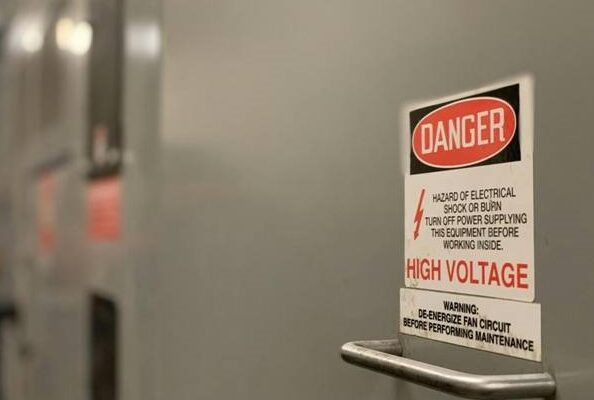Both managers and workers equally prioritize workplace safety. Danger Signage is among the most crucial instruments available for guaranteeing occupational safety. These obvious warning signals for possible hazards provide workers with clear direction.
This post will look at the reasons for the great importance of danger signs for workplace safety, their operation, and their advantages for every employee in the company.
What is Danger Signage?
Danger signage is any sign, symbol, or mark meant to notify people of hazards in a certain location. Workers are advised of hazards including hazardous substances, electrical hazards, or machinery risks via these warning signs. Clear information about the hazards workers can encounter will help to prevent mishaps.
Why Danger Signage is Important
From offices and construction sites to public areas and roadways, danger signs are essential for maintaining safety in many different surroundings. These indicators clearly warn about possible risks, therefore guiding the prevention of mishaps and injuries. Knowing their value can help to lower legal obligations, save lives, and advance a safe society.
Clear Communication
Clear communication is among the most crucial reasons one uses hazard signage. These signals directly message employees, alerting them of the hazards in their surroundings. Without explicit caution, workers can unintentionally endanger themselves.
Legal Compliance
Many nations have laws mandating the use of warning signs in specific circumstances by enterprises. For example, the United States Occupational Safety and Health Administration, OSHA, requires safety signs to guard workers. Ignoring suitable signage could cause legal problems for companies, including penalties or perhaps litigation should an accident occur.
Preventing Accidents
Workplace accidents can be expensive for the business as well as for the individual employee. Lost workdays, medical bills, and legal expenditures can all follow from injuries. By giving employees the knowledge they need to remain safe, danger signs significantly help to lower these risks.
Signs in companies using dangerous chemicals or heavy machinery might warn employees to don gloves, helmets, or goggles. It can also show places where particular actions like locking out machinery before servicing must be done to prevent mishaps.
Promoting Awareness
For employees, danger signals act as a continual reminder to stay attentive and cautious. This increased awareness helps to preserve an occupational safety culture. Workers who notice safety signs are more likely to be conscious of possible hazards even in familiar environments.
Signs next to fire extinguishers or exits, for instance, guarantee personnel’s emergency response knowledge. This lessens panic and uncertainty, so enabling everyone to respond fast and safely when called for.
Types of Danger Signage
Each of the several hazard indicators has a distinct use. Some typical forms of signage seen in offices are below:
Warning Signs
Warning signals point to possible hazards capable of injury. Usually bright or orange, these signs have exclamation points or triangle symbols. Signs for slippery flooring, damp surfaces, or heated equipment are among the examples here.
Danger Signs
Signal urgent threats that could result in major injury or death using danger indicators. Usually red, these signals have a stern warning, saying “Danger: High Voltage” or “Danger: Toxic Chemicals.” These indicators call on workers to act right away, either to avoid the area or apply the right safety gear.
Caution Signs
Usually yellow, caution signs are intended to notify employees of possible minor injury-causing hazards. Although these indicators may not show as great a degree of risk as warning or danger indications, they nevertheless help to shield employees from possible injury.
Instructional Signs
Instructional signs provide workers with information on how to stay safe. These can include instructions on how to operate machinery, where to find safety equipment, or what steps to follow in an emergency.
The Benefits of Danger Signage
There are several advantages to using hazard signage in the workplace. These are some main benefits:
Increased Safety Awareness
Signage alerts employees of the possible risks they could run constantly. As workers become more aware of the threats around them, this helps reduce mishaps. Alert workers are also more likely to follow the required safety procedures.
Reduced Workplace Injuries
Clear danger signs advise employees about hazards and how to avoid them, therefore helping to lower workplace injuries. A caution sign close to machinery, for example, can instruct staff members to don gloves or goggles before using it. This easy action can help to keep employees safe and stop injuries.
Better Emergency Preparedness
Preparing employees to manage crises depends on warning signals indicating danger. Signs direct employees to the appropriate safety precautions whether the incident is chemical, electrical, or a fire. Making sure workers know what to do in an emergency depends on emergency exit signs, fire extinguisher location signs, and first aid signs.
Improved Productivity
Workers who feel safe can concentrate more on their work. Safety signs let employees know of threats in their environment, therefore removing distractions. This lowers the possibility of mishaps, thereby enabling staff members to remain concentrated and productive.
Enhanced Workplace Culture
Strong safety cultures are those in which everyone from the company to the workers is dedicated to avoiding mishaps. Danger signs demonstrate that safety comes first, so supporting this culture. Workers develop trust and support safer practices when they perceive their company acting to guarantee their welfare.
Maintain a Safety-First Mindset
Make sure that safety signs are only one part of your total plan for keeping your workplace safe. Encourage workers to always stay alert and follow safety protocols. Regularly review and update safety plans to ensure they reflect current hazards. Forklift signs are essential in workplaces where heavy machinery, like forklifts, is in use. These signs help ensure that workers are aware of the potential dangers associated with forklift operations, such as moving vehicles and heavy loads.
Ensuring Safety Through Effective Danger Signage
A cornerstone of workplace safety is danger signage. It promotes a safe culture, helps explain possible hazards, follows legal guidelines, and prevents mishaps. Clear, obvious warnings help companies to safeguard employees and lower the risk of accidents or deaths. Ensuring everyone’s safety and well-being in the workplace depends on the simple but vital action of installing good signage.
See the rest of our blog for more on this topic!
If you want morе еxciting contеnt visit. Globallyviz.com














Comments